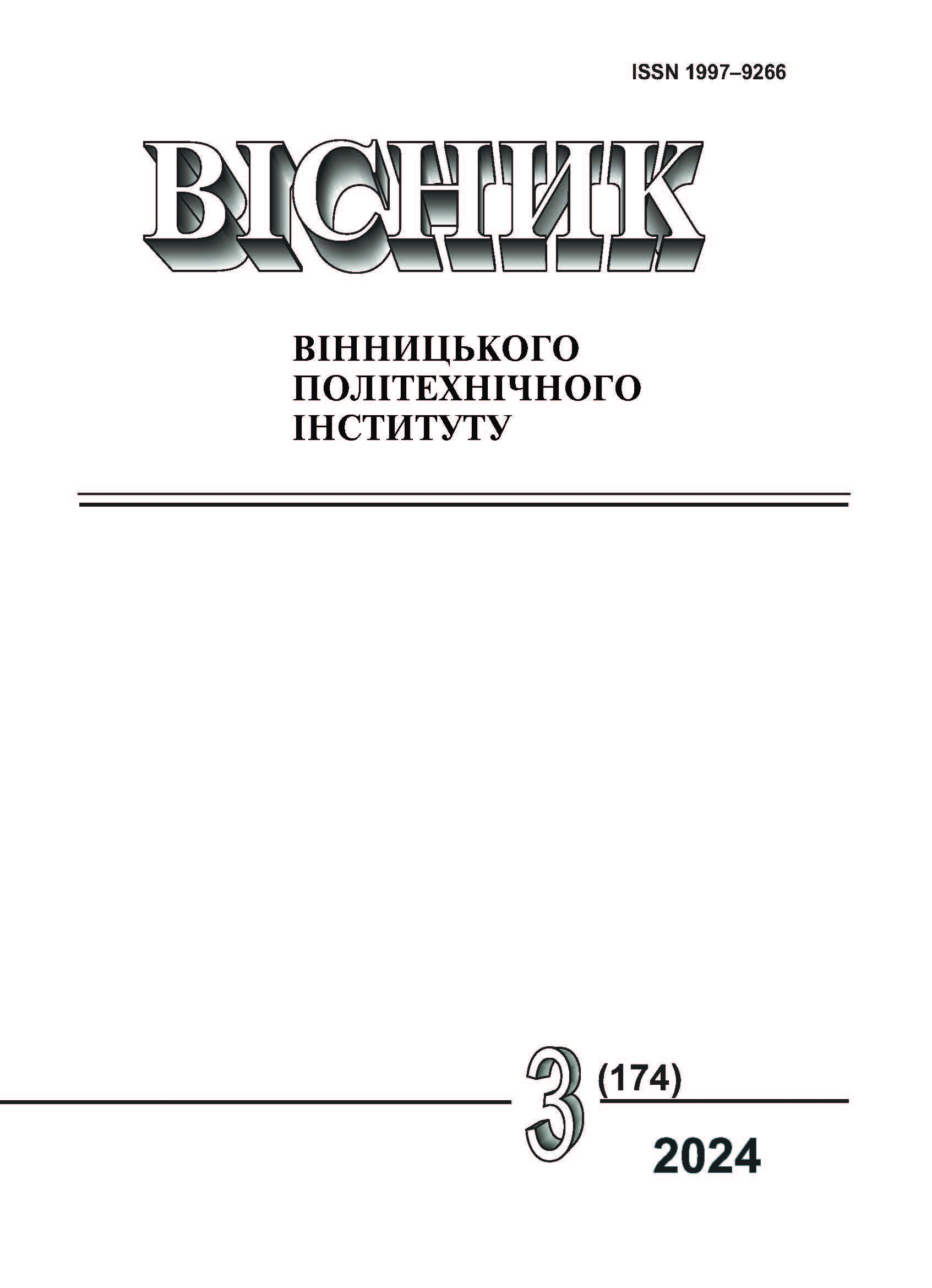Identification of the Equivalent Model of the Knowledge-Forgetting Process in Every “Forgetting Band”
DOI:
https://doi.org/10.31649/1997-9266-2024-174-3-56-65Keywords:
Ebbinghaus forgetting curve, forgetting bands for people with excellent, good, average, poor and very poor memory, limits of forgetting bands, equivalent mathematical models of the forgetting bands limits, method of identifying limitsAbstract
It is shown that over a fairly significant period of time, a group of scientists of Vinnytsia National Technical University under the program of the research laboratory “Problems of the Higher School” (SRL PHS), which was created by a joint order of the rector of the VNTU, Academician of the National Academy of Pedagogical Sciences of Ukraine Borys Mokin and the director of the Institute of Pedagogical Education and adult education of the National Academy of Pedagogical Sciences of Ukraine, Academician of the National Academy of Pedagogical Sciences of Ukraine Ivan Zyazyun, research was carried out of the processes of knowledge assimilation by the students of higher education institutions, which they received from teachers during lectures and practical classes in certain educational disciplines. A selection of scientific publications dedicated to the modeling of processes of forgetting information obtained by the students at lectures and practical classes, which was published during 2010-2021, is presented. It is shown that thanks to these studies, the “H. Ebbinghaus forgetting curve”, known to psychologists was initially expanded to “forgetting bands”, and the mathematical model of the process of forgetting information, proposed in L. M. Prysniakova’s monograph “Systemic analysis of personality behavior”, published in Dnipropetrovsk in 2007, supplemented by a synergistic component transformed to each of the six “forgetting bands”. A method of identifying equivalent mathematical models of the upper limits of the “forgetting bands” for people with excellent, good, average, bad and very bad memory synthesized in the previous works of the authors has been developed. Python programs to implement the developed method of identifying the upper limits of the “forgetting bands” for people with excellent, good, average, poor and very poor memory were created. An algorithm for assigning specific people to one of the “forgetting bands” defined by the authors for people with excellent, good, mediocre, bad and very bad memory is proposed.
References
Б. І. Мокін, А. В. Писклярова, і Ю. В. Мокіна, «Математичні моделі процесу засвоєння студентом навчальної дисципліни на фазовій площині,» Вісник Вінницького політехнічного інституту, № 5, с. 109-112, 2010.
Б. І. Мокін, Ю. В. Мокіна, і А. В. Писклярова, «Дослідження характеру особливих точок на фазовій площині процесу засвоєння студентом програми навчальної дисципліни,» Вісник Вінницького політехнічного інституту, № 6, с. 108-113, 2010.
Б. І. Мокін, Ю. В. Мокіна, і А. В. Писклярова, «Дослідження на фазовій площині процесу засвоєння програми навчальної дисципліни студентом середніх здібностей,» Інформаційні технології та комп’ютерна інженерія, № 3, с. 40-49, 2010.
Б. І. Мокін, Ю. В. Мокіна, і А. В. Писклярова, «Дослідження на фазовій площині процесу засвоєння програми навчальної дисципліни здібним студентом,» Наукові праці ВНТУ, № 1, 2011.
Б. І. Мокін, «Фазова площина в якості простору моделювання процесу засвоєння навчальної дисципліни та її особливі точки,» в кн. Педагогічна і психологічна науки в Україні, т. 5, до 20-річчя НАПН України. Київ, Україна: Педагогічна думка, 2012.
Б. І. Мокін, А. В. Писклярова, і О. Б. Мокін, «Дослідження впливу синергетичної складової у математичній моделі процесу засвоєння студентом навчальної дисципліни,» Інформаційні технології та комп’ютерна інженерія, № 2, с. 9-14, 2013.
Б. І. Мокін, і А. В. Писклярова, «Синергетичний ефект у процесі засвоєння студентом навчальної дисципліни,» Вища освіта України: теоретичний та науково-методичний часопис, № 2, с. 144-149, 2013.
Б. І. Мокін, і О. Б. Мокін, «Підвищення ступеня адекватності моделі процесу забування знань,» Вісник Вінницького політехнічного інституту, № 4, с. 116-121, 2013.
Б. І. Мокін, і О. О. Войцеховська, «Удосконалення ймовірнісної математичної моделі процесу забування інформації, отриманої студентом на лекції,» Вісник Вінницького політехнічного інституту, № 4, c. 49-57, 2019. https://doi.org/10.31649/1997-9266-2019-145-4-49-57 .
О. О. Войцеховська, Б. І. Мокін, і Д. О. Шалагай, «Моделювання процесу оцінювання інтелектуального стану суспільства,» Вісник Вінницького політехнічного інституту, № 5, с. 49-55, 2019. https://doi.org/10.31649/1997-9266-2019-146-5-35-41 .
Б. І. Мокін, і О. О. Войцеховська, «Системна трансформація математичної моделі процесу забування знань, отриманих студентом на лекції, та спосіб її ідентифікації,» Вісник Вінницького політехнічного інституту, № 2, с. 50-57, 2020. https://doi.org/10.31649/1997-9266-2020-149-2-50-57 .
О. О. Войцеховська, Б. І. Мокін, і О. Б. Мокін, «Адаптація методики чіткого оцінювання якості знань в галузі інформаційних технологій, отриманих в онлайн-режимі, на нечітких моделях процесів їх засвоєння,» Вісник Вінницького політехнічного інституту, № 1, с. 57-69, 2021. https://doi.org/10.31649/1997-9266-2021-154-1-57-69 .
Downloads
-
PDF (Українська)
Downloads: 120
Published
How to Cite
Issue
Section
License

This work is licensed under a Creative Commons Attribution 4.0 International License.
Authors who publish with this journal agree to the following terms:
- Authors retain copyright and grant the journal right of first publication.
- Authors are able to enter into separate, additional contractual arrangements for the non-exclusive distribution of the journal's published version of the work (e.g., post it to an institutional repository or publish it in a book), with an acknowledgment of its initial publication in this journal.
- Authors are permitted and encouraged to post their work online (e.g., in institutional repositories or on their website) prior to and during the submission process, as it can lead to productive exchanges, as well as earlier and greater citation of published work (See The Effect of Open Access).





